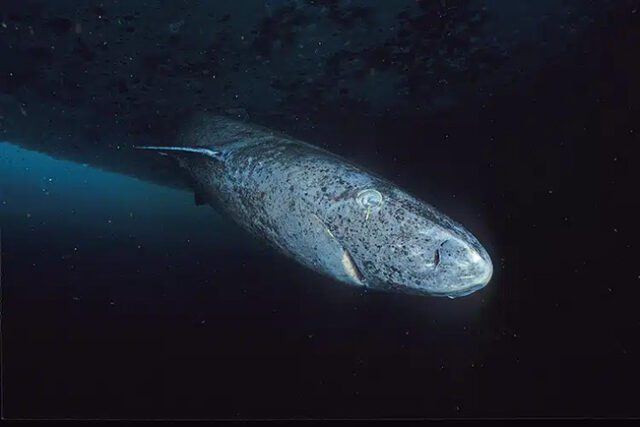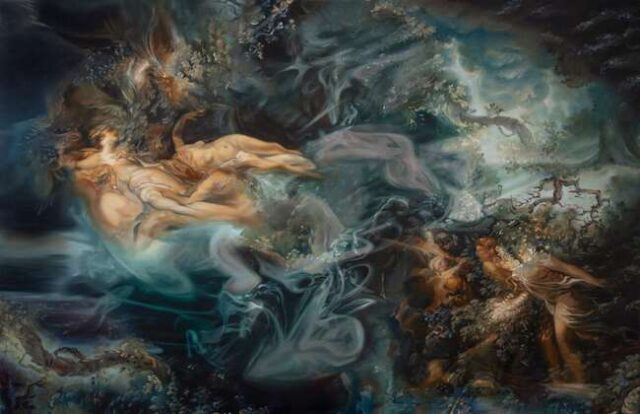
Antarctica is facing an alarming climatic anomaly, as temperatures have surged up to 50°F above average amid a persistent heat wave that began in mid-July. This near-record-breaking event is the second heat wave in the past two years, occurring despite the continent being in the heart of its winter—a time typically characterized by extreme cold and darkness. Eastern Antarctica, in particular, has been hit hard, with temperatures soaring to -22°F Continue reading “Antarctica Faces 50-Degree Temperature Increase Amid Persisting Heat Wave” »

Parrots are known for their intelligence and vocal abilities, but Apollo, a 4-year-old African grey parrot from Saint Petersburg, Florida, has taken it to an extraordinary level. Apollo broke the Guinness World Record for the most items identified by a parrot in three minutes by successfully naming 12 objects on December 18, 2023. This remarkable achievement earned him a place in the Guinness World Records 2025 book, highlighting his impressive cognitive abilities, which are said to be on par with a human toddler. Apollo’s identification of objects like “bugs,” “books,” and “socks” showcases his advanced understanding of the world around him, a skill that has been carefully nurtured by his human parents, Dalton and Victoria Mason. They adopted him in 2020 and have since dedicated themselves to training Apollo using the Model/Rival method developed by Dr. Irene Pepperberg, which has helped him develop a large vocabulary and sophisticated problem-solving skills.

Beyond his training, Apollo enjoys a vibrant life filled with play and social interaction. He shares his home with two white-bellied caique sisters, Soleil and Ophelia, with whom he often plays. Apollo’s love for learning extends beyond his structured education, as he actively applies his knowledge in everyday activities, such as identifying his favorite toys, including a Super Mario figurine of the character Wario. His intelligence and playful personality have won him a significant following on social media, where fans are captivated by his charm and brilliance. Dalton and Victoria continue to nurture Apollo’s talents with the hope that he will one day be recognized as the smartest parrot ever. This goal seems well within reach given his incredible achievements so far.

Portland International Airport (PDX) has opened its newly expanded main terminal, showcasing the world’s largest mass timber structure in an airport setting. The $2 billion renovation, designed by ZGF Architects, doubles the airport’s capacity, enabling it to handle up to 35 million passengers annually by 2045. This ambitious project highlights the Pacific Northwest’s natural beauty and timber industry, with a 9-acre mass timber roof that evokes the feeling of walking through a forest. Using locally sourced wood from small family-owned forests, non-profits, and tribal nations within a 300-mile radius underscores the project’s commitment to sustainability and community support. The innovative design not only enhances the airport’s functionality but also reflects Oregon’s tradition of forest product innovation.

The terminal’s design prioritizes passenger comfort, integrating natural elements and biophilic principles to create a serene and welcoming environment. The mass timber roof, with its intricate lattice design and skylights, floods the terminal with natural light, reducing the need for artificial lighting and enhancing the space’s overall atmosphere. The terminal also features a reconfigured layout inspired by Portland’s walkable neighborhoods, ensuring a smooth and intuitive flow from check-in to boarding. The project, which significantly reduces embodied carbon and energy use, sets a new benchmark in sustainable airport design. As the first phase of a larger expansion, PDX’s new terminal not only meets current demands but also positions itself as a model for future airport developments worldwide.







These shredded chicken and rice stuffed peppers are made in the crockpot (or slow cooker) and are an easy and fun meal when you carve your peppers for Halloween!
I found this recipe on Everyday Jenny and I’m sharing it with you… Continue reading “Halloween Stuffed Pepper” »

This blue French shell nail design exudes elegance and a touch of oceanic charm. The pearls lend a luxurious and sophisticated feel, while the gold accents add a hint of Continue reading “This blue French shell nail design exudes elegance and a touch of oceanic charm” »

The Kemi tiny home, designed by Dragon Tiny Homes, is a compact yet stylish dwelling inspired by Scandinavian design, offering a serene and minimalist living experience. Priced at $50,000, this 20-foot-long home is built on a double-axle trailer, making it an ideal option for those seeking a versatile vacation home or guesthouse. The exterior features sleek black standing seam metal siding with wooden accents, adding a modern touch that complements the subtle Continue reading “The Kemi Tiny Home Is a Scandinavian-Influenced Dwelling with a $50K Price Tag” »

The Greenland shark (Somniosus microcephalus) has captured scientists’ fascination due to its extraordinary longevity, with some individuals living for up to 500 years. As the longest-living vertebrate known to science, these sharks offer a unique window into understanding the biological mechanisms that control aging. Their ability to thrive in the harsh, frigid waters of the Arctic, coupled with their slow metabolism, may hold the key to their extended lifespans. Researchers have discovered that the metabolism of these sharks remains stable, without the typical age-related decline seen in humans, suggesting that the Greenland shark may possess mechanisms that prevent the usual markers of aging. By studying these sharks, scientists hope to unlock new insights into how we might extend the human lifespan or improve the quality of life as we age.

In addition to their remarkable lifespans, Greenland sharks exhibit other fascinating biological traits that make them a subject of intense study. Their slow growth rate and late sexual maturity, with reproduction only beginning around the age of 150, are likely adaptations to the challenging environment of the deep Arctic waters. These sharks have low natural mortality rates, and their life strategy seems to be centered on slow, steady growth and energy conservation, which may contribute to their longevity. Biologist Ewan Camplisson suggests that understanding the resilience of Greenland sharks to age-related diseases, such as cardiac issues, could provide valuable insights into improving human health. By uncovering the secrets of the Greenland shark’s long life, scientists hope to find ways to combat the aging process and enhance the quality of life for humans, especially as we face the challenges of an aging population.

In a quiet corner of London’s Islington district, a dead-end road has become an unexpected tourist attraction thanks to the artistry and devotion of Tim Bushe, an architect who has turned hedge trimming into a heartfelt tribute to his late wife, Philippa. Over the years, Bushe has meticulously sculpted the hedges along his street into an open-air gallery of green sculptures, each creation serving as a living memory of their life together. His work began with a simple Continue reading “Hobbyist Hedge Trimmer Transforms His Street into Green Sculpture Gallery in Memory of Beloved Wife” »

Ella Baudinet’s monumental oil paintings are a captivating fusion of classical realism, surreal abstraction, and modern sensibilities. Her work draws viewers into a dreamlike realm where human figures seem to materialize from smoky swirls of color, blending the precision of photorealism with the imaginative fluidity of abstraction. Influenced by the grandeur of Baroque art, Baudinet’s figures exude a timeless quality, yet they are enveloped in a mysterious atmosphere that feels distinctly contemporary. Her unique style reflects a deep commitment to following her instincts, leading her to evolve from a young photorealistic artist into a painter whose canvases resonate with emotional depth and a powerful visual narrative.

Baudinet’s artistic journey is characterized by a deliberate choice to embrace beauty in a time when much of contemporary art leans towards discomfort and exclusion. Her move to London has further fueled her growth, allowing her to refine her vision and produce work that is not only technically impressive but also spiritually uplifting. By rejecting the modern trend of dismissing beauty as superficial or outdated, Baudinet aims to inspire viewers to connect with their inner selves and find meaning in her art. Her paintings are a testament to the enduring power of beauty, crafted with a mastery that seeks to engage the soul rather than merely the intellect. In doing so, Baudinet challenges the contemporary art world’s norms, advocating for a return to celebrating art that resonates with both the heart and the mind.















































